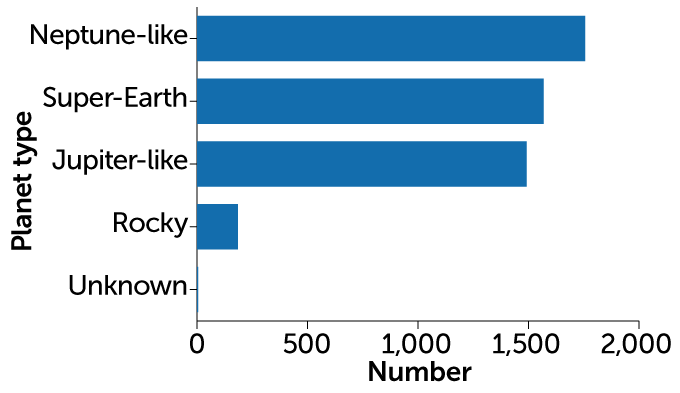It’s official: The number of planets known beyond our solar system has just passed 5,000.
The exoplanet census surpassed this milestone with a recent batch of 60 confirmed exoplanets. These additional worlds were found in data from NASA’s now-defunct K2 mission, the “second life” of the prolific Kepler space telescope, and confirmed with new observations, researchers report March 4 at arXiv.org.
As of March 21, these finds put NASA’s official tally of exoplanets at 5,005.
It’s been 30 years since scientists discovered the first planets orbiting another star — an unlikely pair of small worlds huddled around a pulsar (SN: 1/11/92). Today, exoplanets are so common that astronomers expect most stars host at least one (SN: 1/11/12), says astronomer Aurora Kesseli of Caltech.

Sign Up For the Latest from Science News
Headlines and summaries of the latest Science News articles, delivered to your inbox
Client key* E-mail Address* Go
Thank you for signing up!
There was a problem signing you up.
“One of the most exciting things that I think has happened in the last 30 years is that we’ve really started to be able to fill out the diversity of exoplanets,” Kesseli says
Some look like Jupiter, some look — perhaps — like Earth and some look like nothing familiar. The 5,005 confirmed exoplanets include nearly 1,500 giant gassy planets, roughly 200 that are small and rocky and almost 1,600 “super-Earths,” which are larger than our solar system’s rocky planets and smaller than Neptune (SN: 8/11/15).
Planet diversity
The 5,005 confirmed exoplanets can be categorized and divided into several distinct types, of which planets the size of Neptune are the most common. Super-Earths, not seen in our solar system, are a close second with Jupiter-like giant gassy planets coming in third. Small rocky worlds, some of which may resemble our own, come in fourth.
Breakdown of confirmed exoplanets by type Graph: E. Otwell, Data: NASA Exoplanet ArchiveGraph: E. Otwell, Data: NASA Exoplanet Archive
Graph: E. Otwell, Data: NASA Exoplanet ArchiveGraph: E. Otwell, Data: NASA Exoplanet Archive
Astronomers can’t say much about those worlds beyond diameters, masses and densities. But several projects, like the James Webb Space Telescope, are working on that, Kesseli says (SN: 1/24/22). “Not only are we going to find tons and tons more exoplanets, but we’re also going to start to be able to actually characterize the planets,” she says.
And the search is far from over. NASA’s newest exoplanet hunter, the TESS mission, has confirmed more than 200 planets, with thousands more yet to verify, Kesseli says (SN: 12/2/21). Ongoing searches from ground-based telescopes keep adding to the count as well.
“There’s tons of exoplanets out there,” Kesseli says, “and even more waiting to be discovered.”

